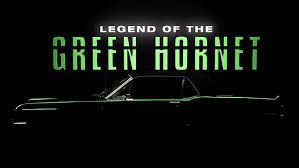1966 Ford Mustang
1966 Ford Mustang
1966 Ford Mustang
The 1966 Ford Mustang, the highlight of the first generation of this legendary pony car, impresses not only with its striking design, but also with the variety of powerful engines that were available under the hood.
The 1966 Ford Mustang, the highlight of the first generation of this legendary pony car, impresses not only with its striking design, but also with the variety of powerful engines that were available under the hood.
The 1966 Ford Mustang, the highlight of the first generation of this legendary pony car, impresses not only with its striking design, but also with the variety of powerful engines that were available under the hood.
1968 Shelby EXP500 "Green Hornet"

The legendary Shelby Green Hornet has one of the most unique backstories in Mustang history. Originally developed as one of two prototypes for the California Special Mustang in 1967, the Green Hornet, chassis number 8F01S104288, made the rounds of the show circuit that year before Ford decided to scrap the program entirely. Fortunately, the Green Hornet ended up in the capable hands of Fred Goodell, who had been named chief engineer at Shelby American just the year before.
Modern and powerful cars rely on advanced technologies such as gasoline injection systems for efficient combustion, economical fuel consumption and reduced exhaust emissions. Another feature of contemporary vehicles is the independent suspension, which ensures comfortable driving and improved traction on uneven roads. Even modern brake systems with four discs are standard these days.
Looking at the 1968 Shelby EXP 500 'Green Hornet', these features could easily lead one to believe that it is a current vehicle such as a Corvette or European exotic. Or maybe you could think it was a late 90s to 2004 Mustang, like the SVT Cobra Mustang with its impressive performance and independent rear suspension. But surprisingly, we're talking about a Mustang from the '60s that had these innovative features four decades ago. This unique vehicle bears the name 'Green Hornet', recognizable by the side stripe marked EXP500.
The origins of the 'Green Hornet' can be traced back to its immediate predecessor, the 'Little Red'. A '67 Mustang hardtop built to Shelby specifications and equipped with a 428ci V8 engine and a Praxton supercharger. 'Little Red' not only served as a project for Shelby chief engineer Fred Goodell, but also as a show vehicle to showcase the performance capabilities of Shelby America. But despite its impressive engine performance, the vehicle had problems with the drive shaft.
The development of the 'Green Hornet' was necessary to test Shelby's newly developed independent suspension and fuel injection system. Ford sent a pre-production example of a '68 hardtop to Michigan, which was promptly rebuilt there. Over the years, the vehicle has undergone several changes, particularly in terms of the drivetrain and independent suspension. The Conelec system, an advanced 15 psi fuel injection system, was part of attempts to meet stricter emissions regulations starting in 1970.
The performance data of the 'Green Hornet' was impressive: from 0 to 60 miles in 5.7 seconds and a top speed of 157 mph. These values are astonishing compared to the standards of the time. Nevertheless, the vehicle's innovative components, such as the Conelec fuel injection and independent suspension, never found their way into series production. The exact reasons for this have been lost to time, but cost probably played a crucial role.
After the vehicle was forgotten and even thought to have been scrapped, the 'Green Hornet' made a surprise appearance at Ford's Dearborn dealership. It became a regular used car with special paint and a powerful engine. Over the years, ownership changed several times, and the car was eventually taken over by Martin Euler of Classic And Muscle Mustang Restoration for a comprehensive restoration.
The restoration took place in the early 90's and included restoring the vehicle to its original 1968 condition. Despite some missing parts, particularly the Conelec EFI system, the vehicle was restored in an impressive manner. The independent suspension was not simply reconstructed, but completely redesigned, with great emphasis on faithfulness to the original.
Over the years, the 'Green Hornet' changed hands again before finally ending up in the collection of Craig Jackson, president of the auction house Barrett-Jackson Collector Car Auction. Although the vehicle is no longer roadworthy, it remains a unique symbol of innovation and forward-looking ideas from a time when many car manufacturers acted more cautiously.













